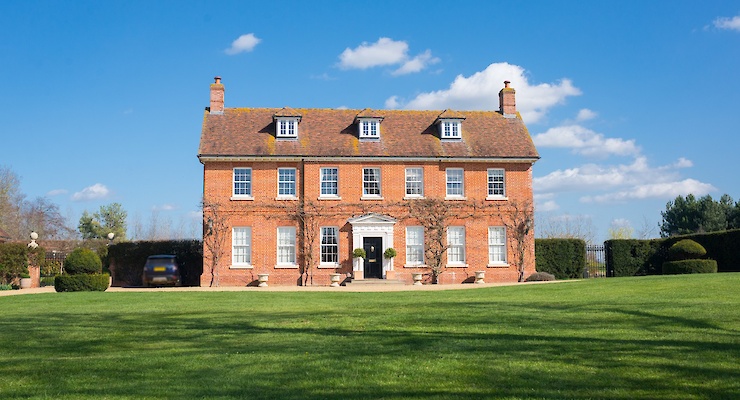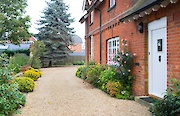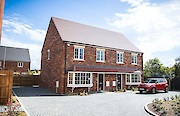


Head of Content

Mortgage Advisor & Director
Can I get a mortgage on a listed building?

If you are a fan of period features and traditional style over modern architecture, you may find yourself wondering if you can get a mortgage on a listed building.
You will be pleased to hear that although the market for listed building mortgages is relatively niche, there are specialist providers who are willing to lend on listed buildings.
As a whole-of-market mortgage broker, at Teito, we have access to deals not available to the general public, including those who lend for listed buildings.
What is a listed building?
Classifying a building as listed means that it is of special architectural or historical interest and requires preservation.
Generally speaking, all buildings built before 1700 and close to their original condition are likely to be listed. The majority of buildings built between 1700-1850 are also more likely to be listed.
For owners of listed buildings, there are certain specific planning restrictions in place designed to protect the property, which as a homeowner, you should be aware of.
Types of listed building
There are three categories of 'significance' for properties in England and Wales; in Scotland and Northern Ireland, there is a separate listed status system.
Grade I listing means these buildings are considered to be of 'exceptional interest'. As a result, they are the rarest category of classification and typically require the highest level of maintenance. There are a minority of lenders willing to lend on a grade I listed property, as they are seen the be the highest risk category.
Grade II* buildings are slightly more common, classed as properties of 'particular importance, of more than special interest.' These buildings typically require less maintenance, and there is a broader pool of potential lenders.
Grade II status buildings are the most popular type of listed building in England and Wales, with more than 90% of listed buildings being in this category. While still a non-conventional property, more lenders are willing to provide a mortgage on Grade II listed buildings than other classifications.
Why are listed properties a problem for lenders?
As a relatively unusual type of home, listed buildings represent a higher risk than a standard home purchase for lenders.
There is a concern that the pool of interested buyers is limited in comparison to conventional homes and that this may affect the future value.
As a result, you may find the rates offered on a listed property are higher than for a standard home. Fear not, our advisors can help you to get the best deal possible, and this shouldn't dissuade you from making an offer on your dream home!
Loan to Value ratios for listed buildings
Lenders are unlikely to offer the same Loan to Value (LTV) on a listed building as for a standard home, to account for the increased risk.
The LTV cap will depend on the provider, the listing status, among other determinants. However, you may find that given the right conditions, some lenders will lend up to 95%.
Shorter mortgage terms for listed buildings
Some lenders will cap the mortgage term on listed buildings to 20 to 25 years to account for the age of the property and mitigate their risk that the condition will deteriorate. The term offered will depend on the nature of the property and any restrictions in place surrounding the maintenance regime. For example, a listed thatched-roof building will have more particular requirements in terms of care.
What else should I watch out for?
For listed buildings, there are more likely to be restrictive covenants in place that should be declared by the vendor ahead of the exchange.
Your mortgage lender will consider these restrictions carefully, so make sure you understand any that are applicable.
Another factor to take into account is the cost of insuring a listed building. Listed buildings can be costly to insure, given the age and expense of replacement in the event of a total loss.
We would recommend making enquiries with insurers before completing the sale.

Get your mortgage in principle certificate in 5 minutes
Will I need a larger deposit for a listed building?
To mitigate the heightened risk of listed building ownership, some lenders will require a larger deposit than for a standard home. While there are lenders that offer a higher LTV, getting the best deal means that maximising the number of potential lenders. With a higher deposit, you will be able to access more lenders and secure a better rate on your new mortgage.
It is possible to get a mortgage on a listed building with a smaller deposit; our advisors can help with this.
What if I have bad credit?
With a poor credit history or adverse credit on your record, it is undeniably more difficult to get a mortgage on a listed building.
There are many reasons for having bad credit on your record, from merely missing a few payments through to CCJs and bankruptcy. The type and age of adverse credit will impact on your chances.
It is not impossible to get a mortgage on a listed building with bad credit, complete our simple online form, and one of our experienced advisors will be in touch!
Repairing, maintaining and developing a listed building
There are limitations when it comes to completing work on a listed building.
Restrictions to the exterior of the property are generally the most typical. However, if there are distinctive features in the interior, you will need to pay particular consideration to these too. Replacing or modifying elements such as windows and doors will generally require consent from the local authority.
Completing work without permission is a criminal offence, so make sure you understand the specific constraints in place on the house.
Assuming you have been granted permission, you may find that the number of specialist contractors available to complete the work is limited. Make sure you can see a record of their previous work and read their reviews. Beware that regular components and materials may not fit the bill, adding another possible expense.
It is also crucial you understand if any work carried out by the previous owners was authorised and executed correctly. If the work was not performed in line with any restrictions, you might need to cover rectification works.
Sourcing a suitable surveyor
We recommend that you source a surveyor who is experienced in valuing listed buildings.
They will have the right level of expertise to provide a fair valuation for your mortgage; someone inexperienced in older properties may negatively influence the mortgage provider's decision.
How can I learn more?
As mortgages for listed buildings are a niche product, we would recommend that you use an experienced mortgage broker.
At Teito, we are an independent whole-of-market broker, meaning we have access to deals that are not generally available to the public. If you are looking to buy a listed building and need a mortgage, complete our simple online form today to get started.
Choosing an Adviser
Selecting a qualified and experienced mortgage adviser is of great importance. To choose a suitable adviser, evaluate their qualifications, experience, and reputation, and ensure they are regulated by the Financial Conduct Authority (FCA).
Read reviews from previous clients and make sure they provide a clear explanation of the products and services they offer, as well as the fees and charges associated with them.
Last updated 29 February 2024





























































